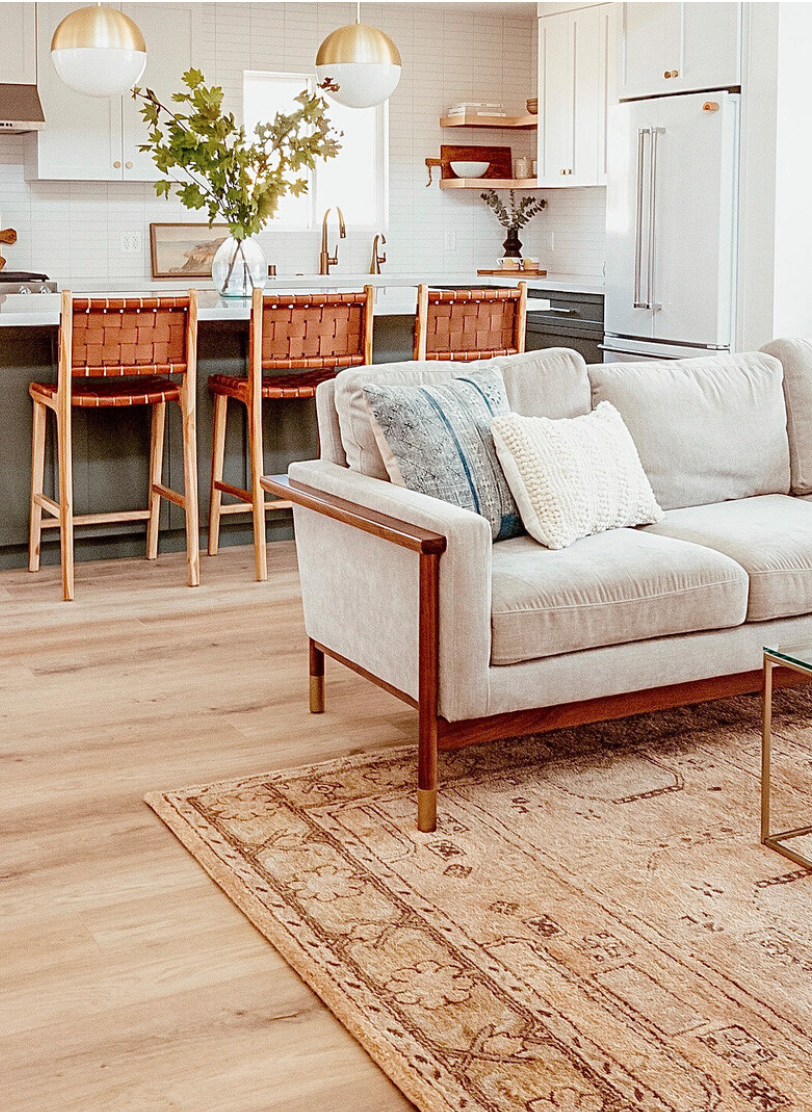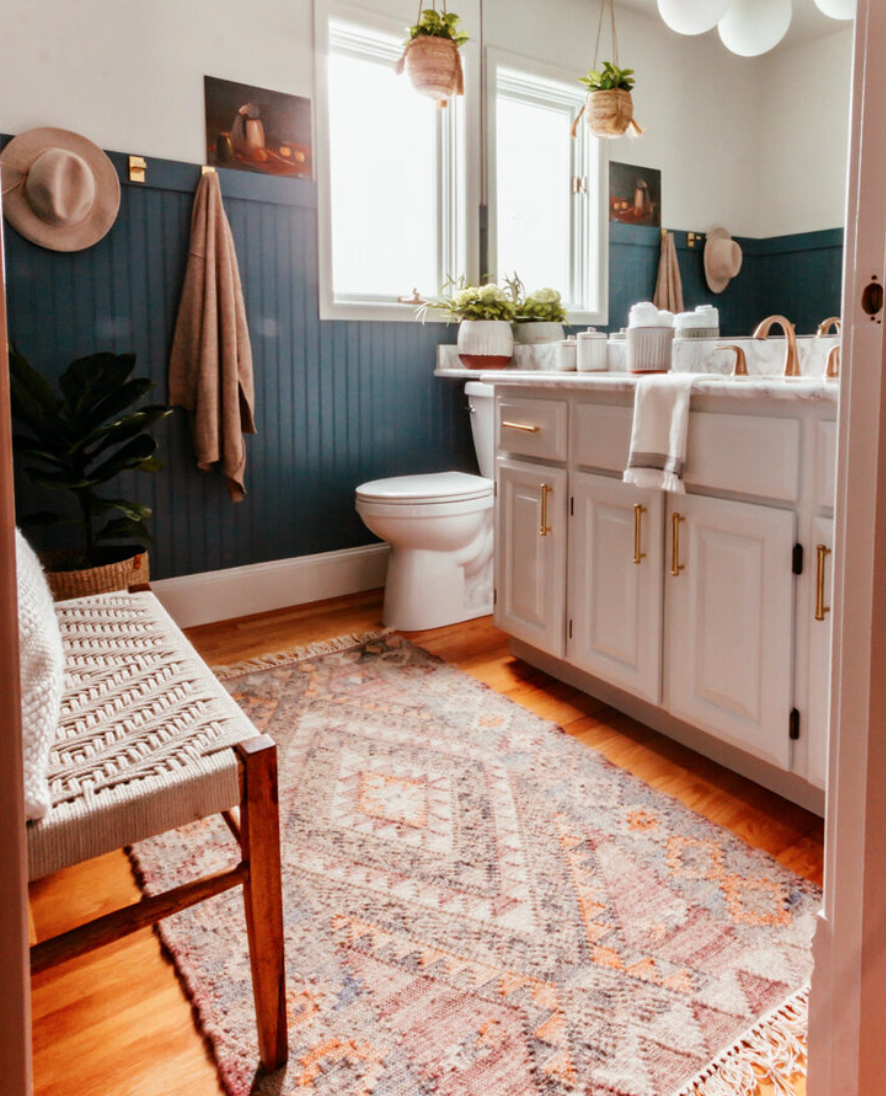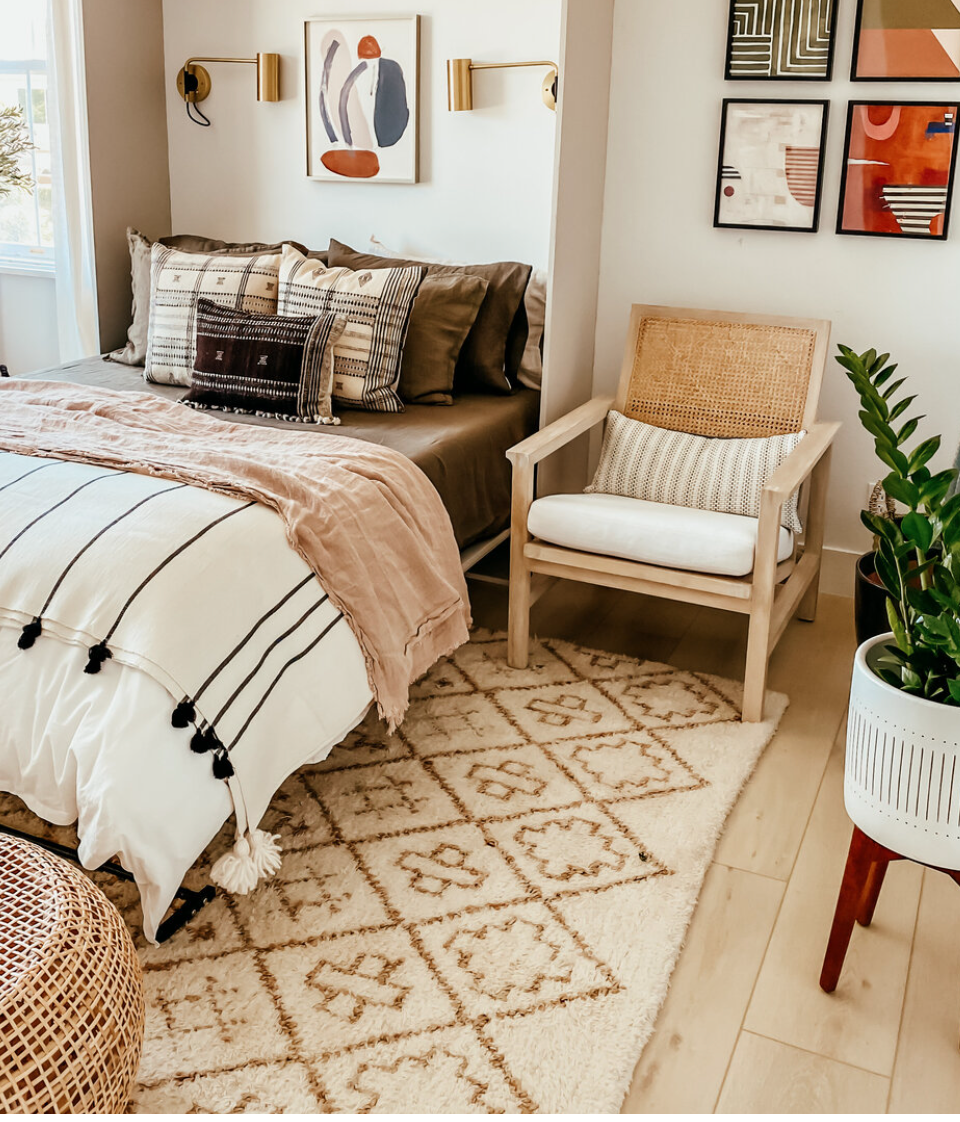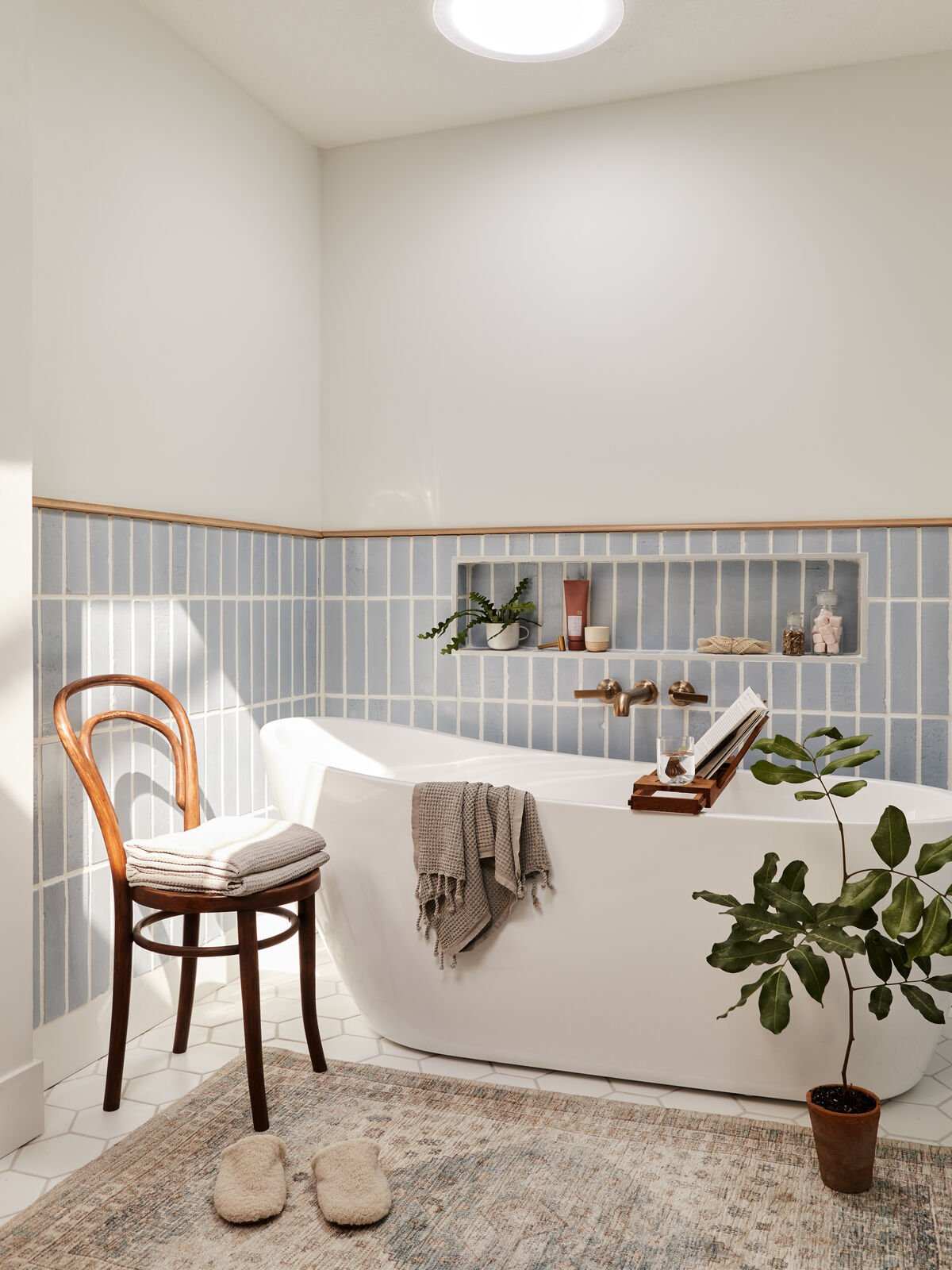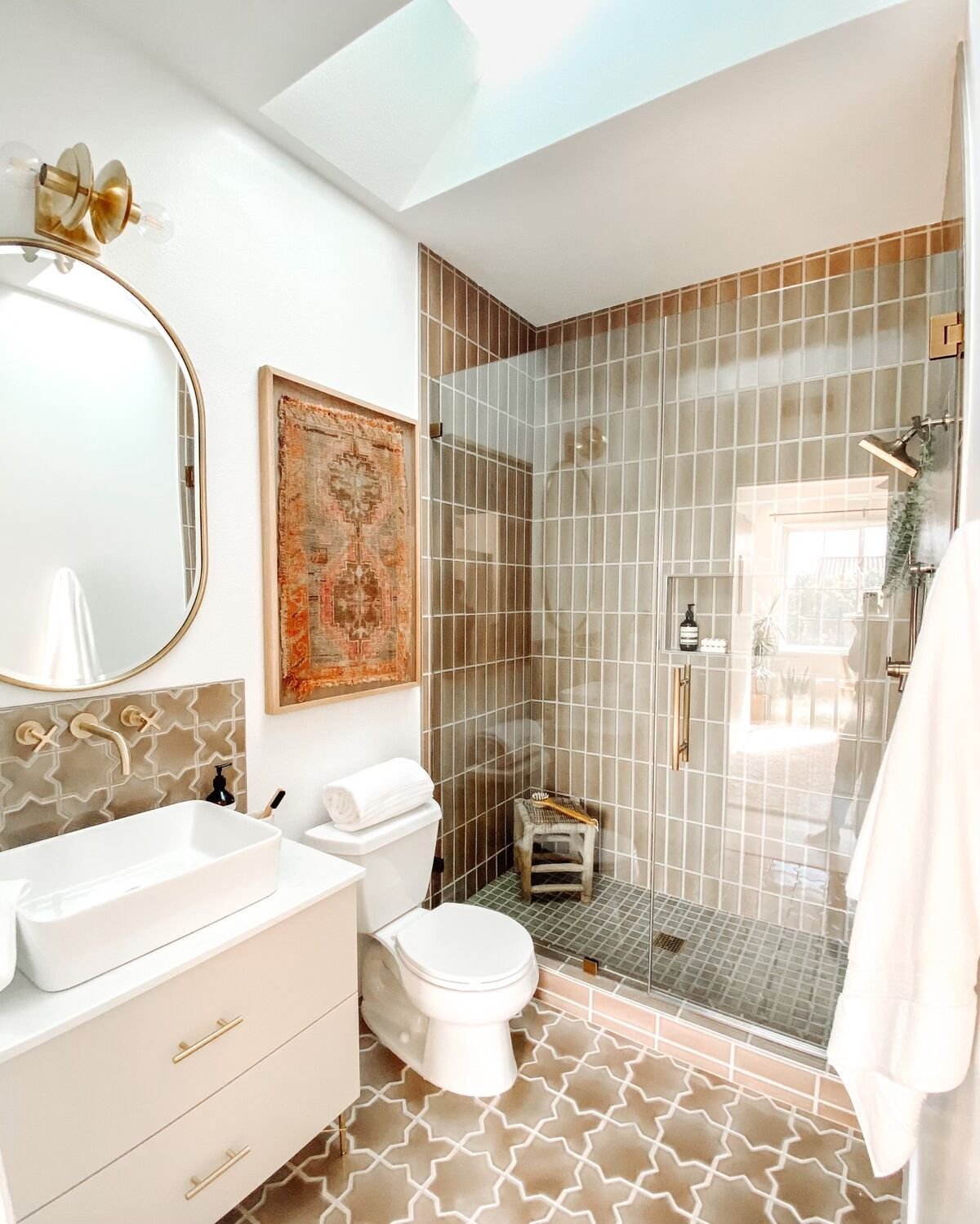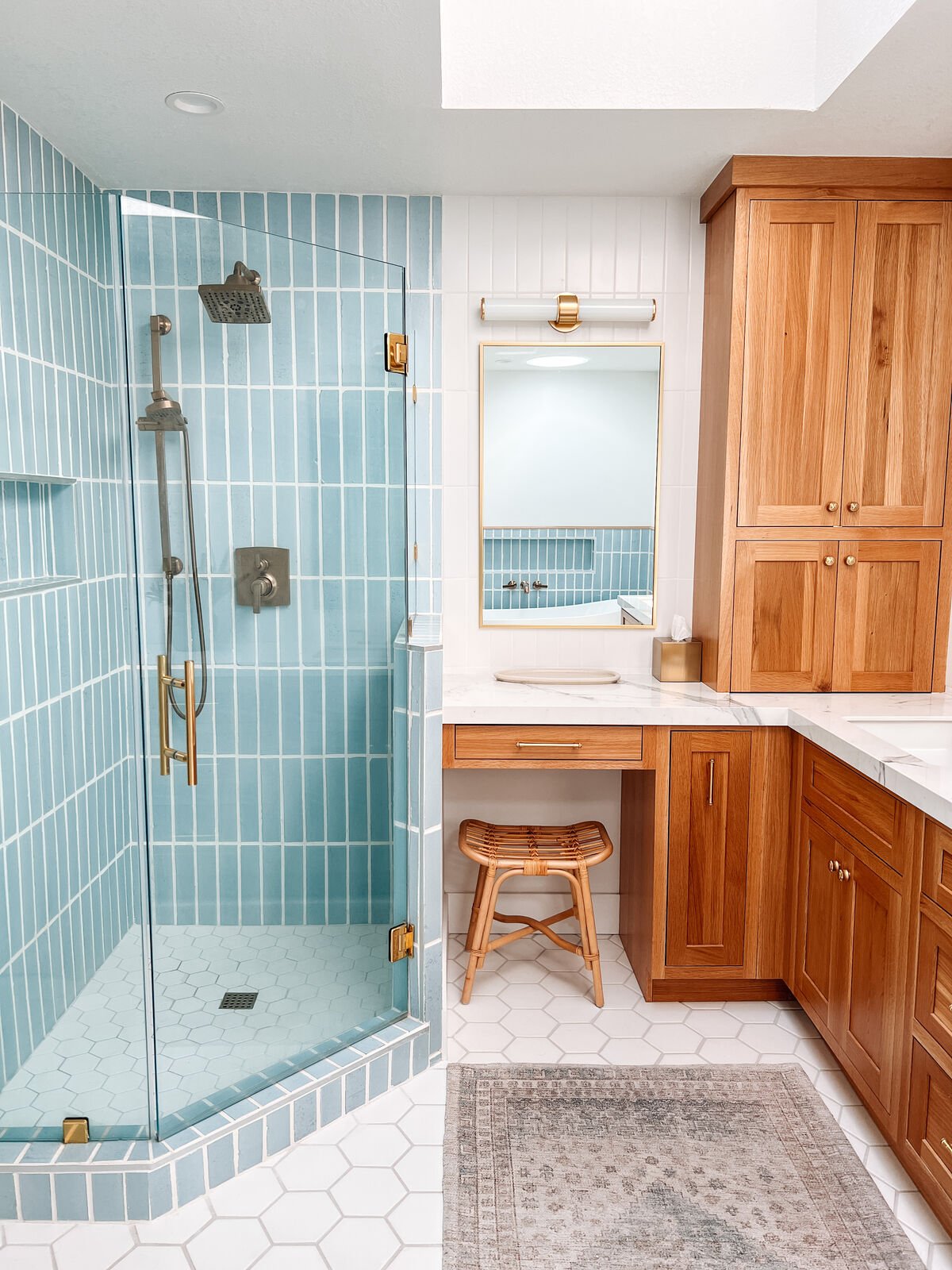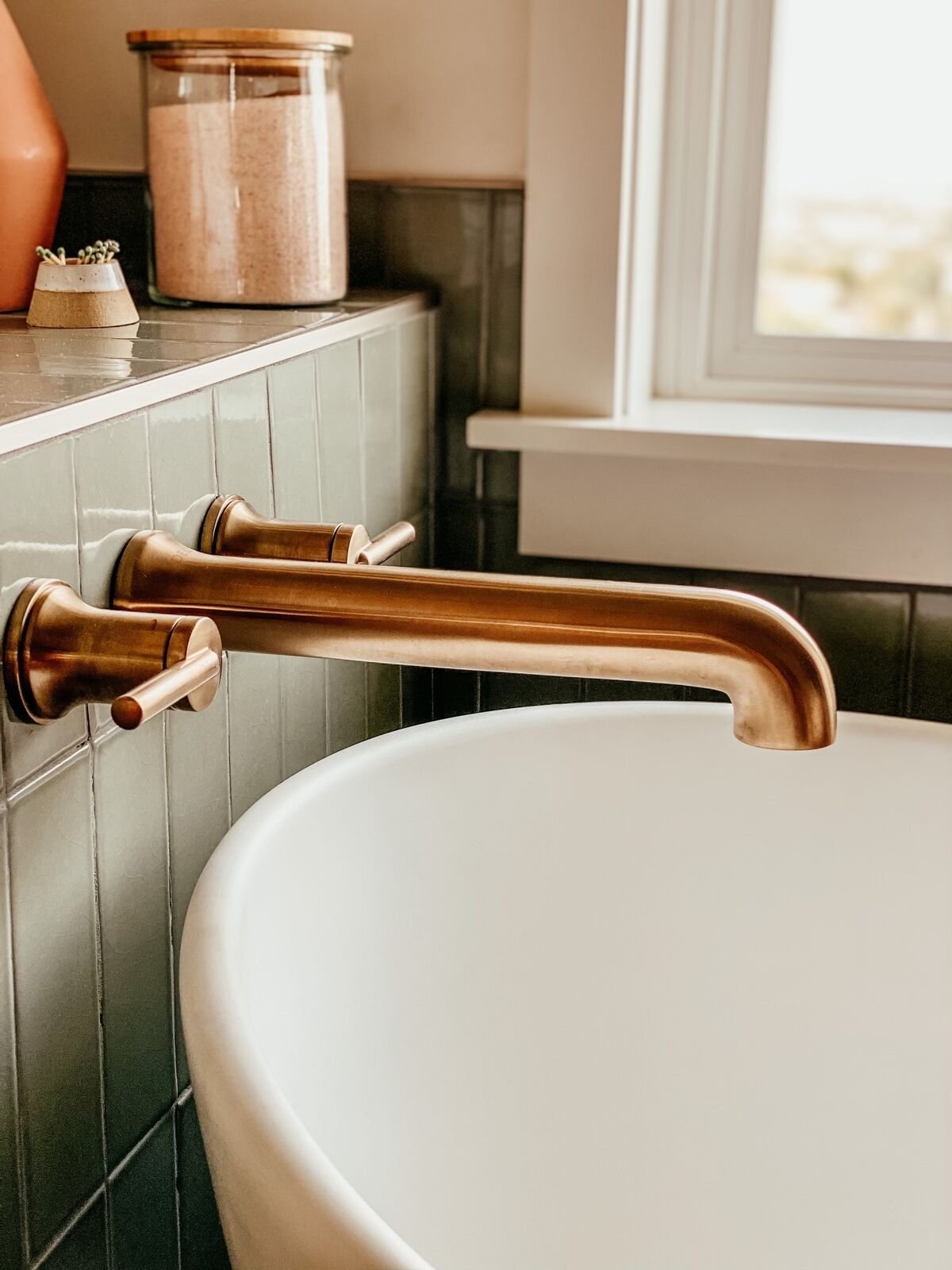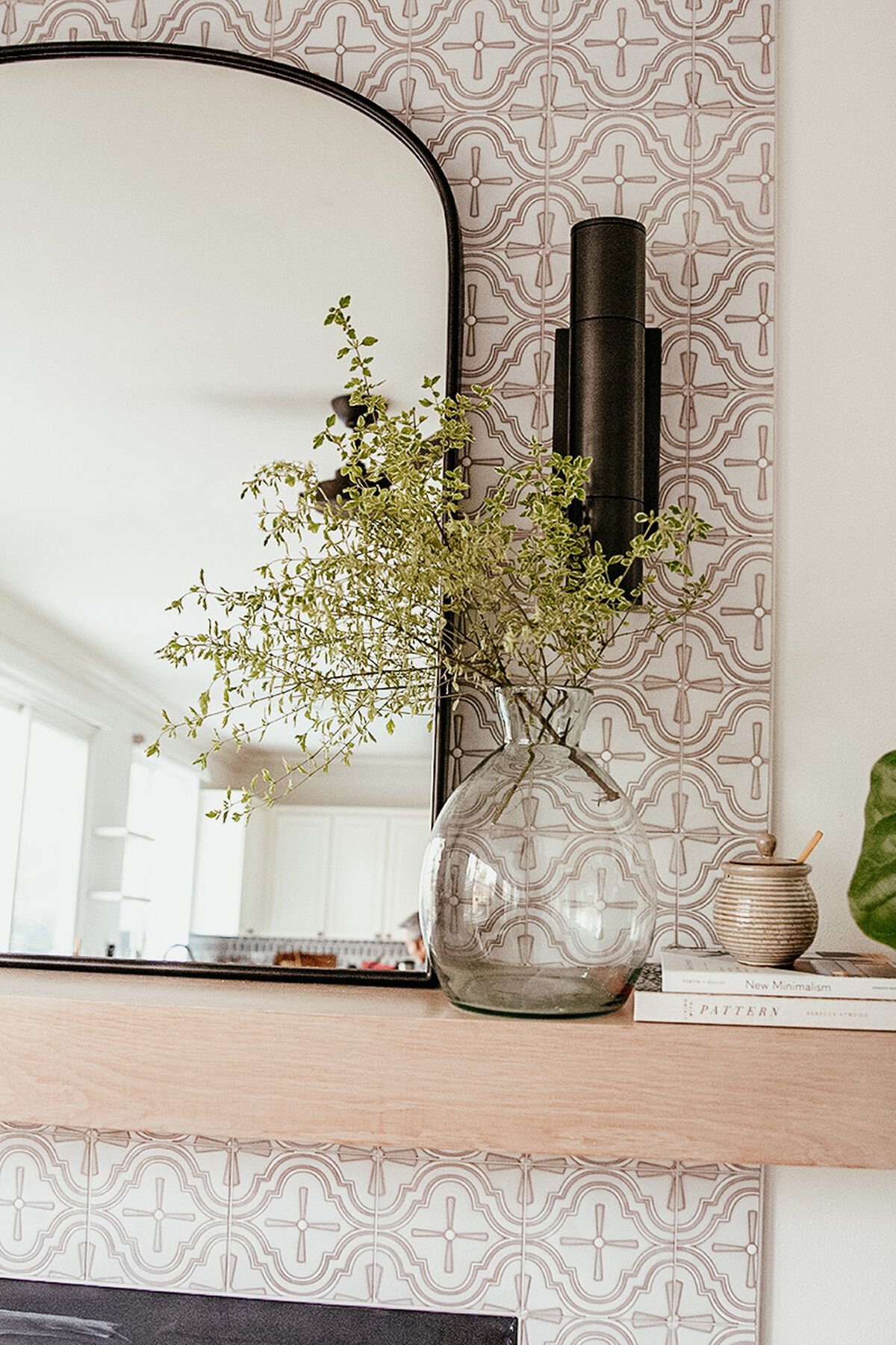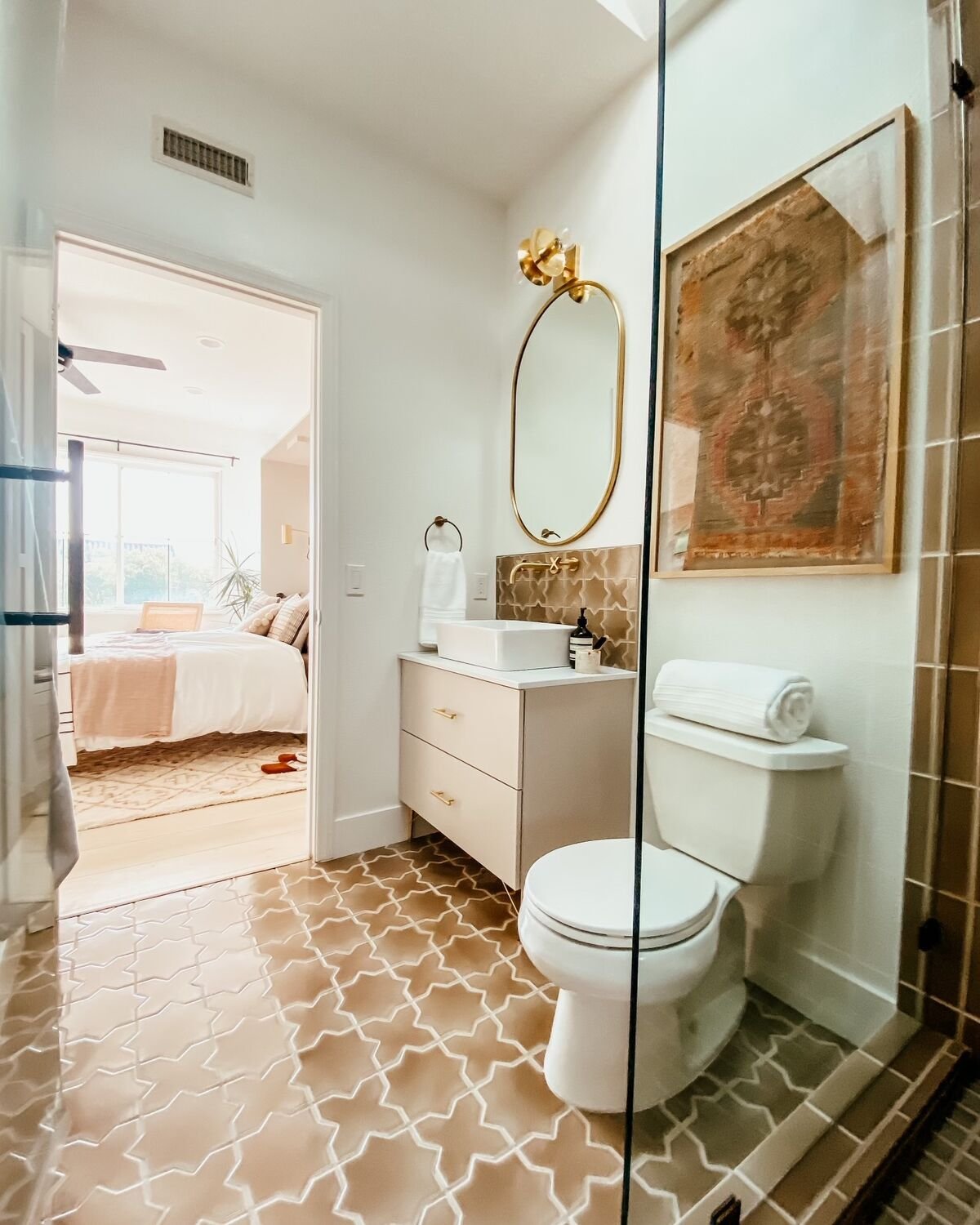Transform Your Home and Your Mind: The Psychology Behind Interior Design with Anita Yokota
My guest today is psychologist-turned-interior-desiger, Anita Yokota. When she embarked on her career as a therapist and saw clients in their own homes, she began to comprehend the impact of their environments on their mental and emotional health. Her in-home visits exposed her to a variety of home environments, and she soon noticed a correlation between the state of a home and the emotional climate within it. This insight led her to help clients organize their living spaces, which in turn reduced tensions within the family. After 20 years in therapy, she made a pivot to her creative passion for interior design. She has created her own home therapy method, an approach that combines tangible organization with cognitive feelings, and she's just released her first book, also called Home Therapy. In our conversation, Anita shares story after story about how to heal yourself and your relationship using intentional design.
KEY MOMENTS - TIMESTAMPED
00:00:00 - Introduction,
The guest, Anita Yokota, discusses her excitement about her new book and the timing of its release during the pandemic. She also expresses her enthusiasm for the increased awareness of mental health and the importance of our home environments.
00:02:01 - Elevated Awareness of Mental Health,
Anita highlights the positive shift in society's perception of mental health, with even younger generations embracing open conversations about it. She shares her excitement as a therapist to see mental health becoming a more receptive and prioritized topic.
00:05:36 - The Method and Journey,
Anita explains her background as a therapist and how it influenced her method of using home environments to help clients tell their stories. She discusses her transition from therapy to interior design and how her personal journey of confronting limiting beliefs about perfectionism and embracing the gray areas of life has shaped her approach.
00:08:59 - The Individual Domain,
Anita dives into the first domain explored in her book, the individual domain. She emphasizes the importance of reframing limiting beliefs about oneself and the home. She encourages embracing the season of life and letting go of perfectionism in order to create a home that reflects one's true identity.
00:12:56 - Embracing the Gray Area,
Anita discusses the significance of embracing the gray area in life and in our homes. She encourages finding the balance between the things we love and the things we dislike, and letting go of extreme thinking. She highlights the importance of slow style and enjoying the process of
00:16:26 - The Importance of Individual Therapy,
Anita emphasizes that individual therapy is more important for a couple than therapy together as it helps clarify desires, feelings, and wishes. This foundation sets the stage for a harmonious relationship and a clear vision for how they want to live together.
00:17:06 - The Energy of Organization,
Anita discusses how organization is not just about physical clutter but also about the energy and feelings associated with the space. By understanding and addressing these emotions, individuals can create a supportive and empowering environment.
00:18:07 - Structure and Support,
Anita compares the need for structure in organizing a home to parenting. Just as children act out to seek help, the need for structure in the home is a cry for support. Establishing structure and boundaries can provide a sense of security and empowerment.
00:19:38 - The Importance of Self-Care,
Anita highlights the need for self-care in the home. Creating rejuvenating spaces allows individuals to take a break from the emotional and physical work they do for themselves and others. Self-care doesn't have to be extravagant and can be incorporated into daily routines.
00:22:15 - The Positive Loop,
Anita and Zandra discuss the concept of the positive loop in home design and organization. By continuously revisiting and adjusting the different domains of the home, individuals can create a fluid and supportive environment that aligns with their changing needs and aspirations.
00:31:32 - The Healing Power of Homes,
Anita discusses how our homes can be more than just a place to sleep and store our belongings. She emphasizes the healing and transformative potential of our living spaces for personal growth and reaching life goals.
00:31:47 - Creating Connection through Space,
Anita explains how the way we set up our homes can impact the depth of our connections with others. She encourages listeners to think about transforming spaces that aren't working to create flourishing relationships. She suggests using dining tables as neutral family meeting areas and transforming living rooms into inclusive play spaces.
00:34:09 - Meeting Individual Needs,
Anita shares how she created a reading corner in her living room for her daughter during the pandemic. She emphasizes the importance of meeting individuals where they're at and finding solutions that satisfy everyone's needs. Letting go of preconceived expectations and finding common ground are key.
00:35:30 - Understanding Different Design Preferences,
Anita explores the underlying reasons behind different design preferences within relationships. She discusses the importance of digging deeper into the motivations behind furniture choices and finding solutions that go beyond surface-level disagreements.
00:37:24 - The Importance of Self-Care Spaces,
Anita highlights the need for intentional self-care spaces in our homes. She suggests incorporating moments of pause and renewal throughout our living spaces, not just limited to bedrooms and bathrooms. Creating a serene and organized environment can positively impact our mental and emotional well-being.
FULL TRANSCRIPT
[00:00:00] Anita Yokota: I'm just really excited to talk to you.
[00:00:02] Zandra Zuraw: Good. Likewise. I've been following you for a long time. Congratulations on this book.
[00:00:07] Anita Yokota: So much. Yes.
[00:00:09] Zandra Zuraw: Yes. What, what it's such, it must feel so good to get it out into the world.
[00:00:14] Anita Yokota: Oh, oh, you know, and, and just. Before I jump in, I want to, I love the work you do
too. So
[00:00:20] Zandra Zuraw: thank you.
[00:00:21] Anita Yokota: Yes, absolutely. , this book was, if you can believe it or not, the, , it, the book proposal was presented to the publishing houses three days before the world closed down. It was, I mean, if it was just three days later, what I would, this book almost did not happen. The universe. Yeah. It was crazy. The universe. , just, you know, just, you know, it wanted the book to happen. And then I was writing the book and, , trying to shoot the book during the pandemic. Yeah. And. , talk about determination and yeah, right. So it is, , you know, writing a book already is a labor of love, but this one is my first obviously, but it is so special that it's actually out here now.
[00:01:09] Zandra Zuraw: Yes. And you know, I mean really pandemic that's when everybody was looking inward anyway. And so it's really good timing and I'm, I'm thankful that I don't think people are losing sight of, realizing how important their environment is, you know, I thought maybe we would forget all about all this, you know, thinking we were doing about our homes and our environments once, once the pandemic was over. But I think it's, I think it's staying with us, which is a good thing.
[00:01:37] Anita Yokota: You know, what's really exciting for me is, , I think home and mental health has really elevated to, , everyone's awareness in a very real way. , it's very exciting because now mental health is like. You know, it's like talking about, , getting our car washed, you know, there's the stigma is lowered. I mean, it's still there, but the conversation is so open. And as a therapist, I'm so excited that
[00:02:04] Zandra Zuraw: I bet you are, Oh my gosh.
[00:02:06] Anita Yokota: Even the, , younger, Oh, I hate saying younger generations, but yeah, you know, even Gen Z is like, so on it. And so it's very exciting for me to be able to talk about something and have that be a receptive thing versus, I mean, yeah, three years ago, I don't think the awareness was prioritized.
[00:02:28] Zandra Zuraw: I think the stigma was very much there. I feel like my son's generation, he's now 21. They were, they talked about it much more comfortably in high school. Like if someone was having, you know, a mental health day, they didn't pretend they were sick. They said, I'm having a mental health day, but for my, you know, we're older than that. Like it's been, it has been a stigma. I've talked a few times on the podcast about my own. , clinical chronic depression, and I do that. I'm not comfortable talking about it. It was definitely a stigma when I was first working through it and Yet I talk about it because I feel like somebody else might need to hear that they're not the only ones. Right. So, , but, but this book is a big, beautiful ode to the connection between mental health and our environments.
And I also have to say, and I wasn't even going to mention this but I'm going to. , I currently so I've done a ton of therapy. , but I've also I'm also currently going through this, , meditation challenge, like it's a 30 day six week actually six week meditation challenge. And so so much of what your book is like there's a lot of You know, it's not just old style therapy. There's a lot of, , magical, , it's like, well, who are you coming in? It is, but it's not like it makes complete sense. It's really, it's, it's not off putting. It's not just for a small number of people who are into woowoo. I mean, it's, So anyway, I just wanted you to know that I'm feeling very connected to you and your book.
[00:04:00] Anita Yokota: Thank you. Yes. , you know, with my cognitive behavioral therapy background, you know, in science, it can be very heady. , but then with my personal experience, I'm an Aries. So like I feel everything in the moment in the present, a lot of feelings. And so as a therapist, I kind of was amalgamation of. The feelings and the cognitive thoughts. And that came out in my work as a therapist and now as interior designer. So I'm so glad that it's speaking to you.
Yes. Yes.
[00:04:30] Zandra Zuraw: Well, let's, let's dive in. , first of all, the book is organized. Well, I mean, it's very, it's not just easy to follow, but it makes sense the order in which you talk about things you, there's four different domains that you address.
And we're going to go through each of them. But even before we name those, I just wanted. To read something that you wrote. , your, your approach. I think you've summed it up very well here when you say this is what you want a home to do: help you establish a strong identity, establish clear organization of your things, connect with others, and practice your own self care, and that is just so clear. And make so much sense. And I don't think we talk about home in that way. We're talking about mental health, but we often don't talk about what home can do for us and to use it as that kind of, , that kind of resource. So tell us a little bit about your process, your method, which you do talk about in the book. How did you come up with it? How did you come to it? How did you develop these different domains?
[00:05:40] Anita Yokota: Yes, absolutely. So for 20 years, I was a therapist who even in homes, because I did a lot of in home counseling. , it's It, it was about helping clients make sense of their story. And now as a designer, I get to help them tell it in.
[00:05:59] Zandra Zuraw: Oh, that's so beautifully said. Oh my gosh. I love it.
[00:06:03] Anita Yokota: It's it's such a privilege, honestly, it is such a privilege. So way, way back when I was even an intern as a marriage and family therapist intern, I would do home visits from my catchment area was from Compton. All the way up to Malibu. Oh, wow. The demographics is like, and all over the place in LA.
And I got to see all kinds of different home environments. And little did I know that's when I started my home therapy method, because we were taught when we first stepped into the home is. observe the emotional climate. And with the emotional climate, there's visual cues, there's physical, , things that will cue you to the emotional climate.
So if it's a really messy front entry and you see chaos, you see tons of, you know, the kitchen counter just, Littered and cluttered, , beyond what's within normal limits, you know, you can tell that this is pretty chaotic, you know, what's the emotional climate or, you know, I stepped into homes that were very sterile, where it looked like you stepped into arch digest and there was no life, you know, it can be very extreme either way, two sides of the same coin.
Yes. , so all the way back then I would unbeknownst to myself, just help people organize. You know, their front entry and because that was a sticking point, the mom and the dad were always yelling at the teenagers to clean up the backpacks and the shoes. And, and that was, you know, what they came to me with.
And so not only did I talk about their feelings and how to implement positive communication, but there was our, , example of how to do it, which is let's, let's tackle this area of the home. That's making you guys fight so much.
[00:07:46] Zandra Zuraw: Right. Right. Right. ,
[00:07:47] Anita Yokota: So that's when I started, you know, again, unbeknownst, and then 20 years later, I made a pivot to interior design because I've always been that friend who knew all the paint colors and the advice giver. And I just loved it. My dad's an architect, so I'm sure that influenced my, , creativity in that sense. Sure. . And so it just made sense to pivot because I realized I was not an office person. , but I still wanted to give back to the community using my talents and skills. And, , that was how I jumped from marriage and family therapy to interior design and honing in on my method.
[00:08:30] Zandra Zuraw: It makes so much sense. I mean, that path, when you read the book, you're like, Oh my gosh, they're, they're really, they're so entwined. The way you work has beautifully put those two things together.
And so now I just want to mention these four domains that you, that you have all of us kind of really take a deep dive into do some soul searching on: the individual domain, the organizational domain, the communal domain, and the renewal domain.
And I want to start As you do with the individual domain, what I would really, I'm really interested in. One of the things you talk about, this is very therapist y and a wonderful way, you know, what are your limiting beliefs about yourself, about your home, about what you should be able to feel and experience inside your home.
, and you, you said that you had to reframe your own story. You had to confront your own limiting beliefs. So I was wondering if you could just tell us a little bit about what you had to do.
[00:09:27] Anita Yokota: I'd love to share that. , so at being an Asian American, you know, it's quite interesting because the goal of, , perfectionism is very heavily drilled into us.
And it's not because like we're born and our parents are like, you're not good enough, you know, but it's more of like performance driven of like, let's do our best. Okay. So perfectionism is not always a bad thing. It's like goals doing our best. , but maybe the, the language that's used, you know, because obviously there's not everyone had in therapy background to re reframe these, you know, it's just more like, Hey, and it's very tangible, right?
Get good grades, be a good person, be a good citizen. And, , so I kind of. Took that there was these limiting beliefs of like, Hmm, my first apartment, , whether it's my first home, it took me a journey to let go of those. First of all, be aware of those limiting beliefs. Right. And then learning that, Oh, I don't have to be perfect.
My home isn't all or nothing. It's not like I let it to go to crap. Or the other extremist. It has to look like a magazine worthy home. , I, it was a journey because my kids were so small and I'm sure everyone who's listening can relate to this. , when you have little, little babies and toddlers and preschoolers and actually even teenagers, , there's just clutter everywhere.
And there's a lot of prodding. There's a lot of Okay, you know, this is your area to clean up, bring it back to your room. This is our communal area. , just a lot of communication about organizing our clutter and, . Embracing that and owning it as a season of our life and being okay with it. Instead of being hard on myself, I was very like, oh, you know, and so, you know, that's where my DIY skills really started to hone in, , because of budget and time and energy.
, I really explored letting go of my perfectionism and also acknowledging that I'm good enough. Yeah. , and this is, my home is going to have Fisher price and maybe some pottery barn things in mixed with it, but that's just the season of my life, you know, right, right, right. So yeah, it was a journey. It was definitely a journey.
It continues to be a journey because I am supposed to be this interior designer expert. And yet we live in a builder grade, you know, Southern California home. , and it's 1997 and all of a sudden, you know, and it looks, it's. It's wonderful, but there's so many things, right. That I would love to do with it.
, but again, time budget energy. So I love sharing through this book and through just my, , messaging on Instagram or wherever people listen to me is again, that gray area of being it's not black and white. Life is just gray. You know, and how do we embrace that gray, the good, bad, and the ugly versus wanting to jump to the black side or to the white side, very extreme thinking.
And part of letting go of that limiting beliefs about our homes is embracing that gray area of like, well, I love this part about my house. I really hate that part of my house. Yep. You know what? It can be a, and instead of like a, or it's just an and.
[00:13:02] Zandra Zuraw: I love that. Yeah. I talk a lot of, I mean, you know, my thing is slow style. And the reason for it is everything that you just mentioned, which is acknowledging the time of life that you're in and allowing. I love how you call it the gray area, allowing the messiness to be okay. I mean, we are not. Our homes are really not for Instagram. They're not to be picture perfect. They are, they're living, breathing things and there are living, breathing people and plants and animals in them.
And so it's, it's really about, I think, enjoying that process of Letting your style evolve as slowly as it needs to go as quickly as sometimes, you know, every once in a while you can do this fast makeover of like a one whole room like in a month, but but that that's not that's not the that's not the norm right. The norm is the day to day life.
[00:13:58] Anita Yokota: I think with social media and like HGTV shows, people have this like microwave time, , narrative, you know, and I said, and I, I want microwave time too, but, but life is so up and down, up and down. You know, and, and talk about perfectionism, you know, I have so many clients who come to me and they went on a whim when they first moved into their house and bought all brown things.
[00:14:27] Zandra Zuraw: Everything's brown. All at once. Everything. Yes. Like a whirlwind shopping spree. Yes.
[00:14:31] Anita Yokota: Yes. And, , just like how you share, , to your listeners, it's let's slow down, , not having everything perfect all at once is okay. And for me, what I love bringing to the table is the emotional aspect. What's driving us to want to buy everything Brown 24 in hours. That's where my therapy background. , comes in and I love sharing with my clients and, , with listeners that there's actually an emotional process to it. So don't be hard on yourself because just like therapy, , there's so many layers of the onion to appeal. So just not being hard on ourselves about it.
[00:15:14] Zandra Zuraw: Yes, absolutely. And all of that you talk about in the individual domain. And I, I, I, I sense. I can't remember if you actually said this or not, but to me it made so much sense that that came first in the book, too. I mean, right? We have to do that work first.
[00:15:31] Anita Yokota: Absolutely. I modeled the four domains. And just in case your listeners, if they're wondering what a domain is, it's a layer. If you can imagine any space in your home, it's a layer of, , design or space that you would want to intend that empty space or that blank space to be. So when you're in therapy, All the therapies out of all the therapies, family therapy, couples, , counseling, individual therapy, individual therapy always trumps the rest because it really starts with ourselves. I had so many families. Especially parents bring in their, , raging hormonal teenager who's acting out and say, fix him, sir. And I'm like, Hmm. , I can't just sit in a room with just one person. , I have to sit with you as a couple, as individually, or as the, whoever that is the issue between, you know, and, but I would always refer say for a couple, a marital couple, that their individual therapy is more important than the both of them coming in together. Interesting, yeah. To start, to start.
[00:16:39] Zandra Zuraw: Right, for a foundation, yeah.
[00:16:40] Anita Yokota: For a foundation, so that's why individual domain to me is so important because If you can clarify your desires, your feelings, your wishes about how you want the people and yourself to live in this space and everything else falls into place.
[00:16:58] Zandra Zuraw: Yeah. Right. Right. Your point of view, it starts with how do we want to feel and what do we want to experience Absolutely. It's not what, what chandelier should we get or what, you know, dining room table should we have? right. It's the energy. And so keep going with that when it comes to organization. I feel like people, when they hear the word organization, they, they don't talk about their feelings. They don't even really talk about what they want to experience, except I want everything. Well, perfection definitely comes into organization.
Yes. Right. So
[00:17:29] Anita Yokota: just like in therapy, once your individual core is starting to, , being, you know, it's starting to identify, you're starting to feel a little more solid. You need a structure to help you to continue to feel that security, that kind of individual empowerment, just like with parenting, with children and teens, they can act out.
And the more they act out that message. It's actually, please help me. So the more someone pushes you away, instead of going, Oh God, they don't want me to help. It's actually a cry for help saying, I need help. And I don't know the structure. I need structure. Structure. Yeah. Yeah. So that's why I love how I can use these meta things at home to help you through your mental health journeys.
You're, you're really kind of giving yourself on your own therapy at home, which is exciting. Totally. Once you identify your individual. , aspirations or your identity, you've clarified it more than you need structure around your home to support it. So that means cleaning up your hallway, your front entry, your pantry, your bathroom, drawers, your kitchen countertops.
You need that kind of structure to support yourself. Yeah. And then we move on to, once you have that structure, you've kind of found that groove. , and you feel like, okay, outside, I'm ready to reach outside of myself. Then the , communal domain is where you start honing in on the relationships and you feel strong enough, right? With the structure. Yes. To go outside of yourself and deepen the relationships you have at home. And all of that is a lot of work. You know, it's a lot of physical work. It's a lot of emotional work.
So lastly, the renewal domain is self care because you need a break from all that emotional and physical work you're doing, , for yourself and for others in your home. And how do we create. Really rejuvenating spaces to just unapologetically ourselves, self care, right? And it doesn't have to be a spa. We can find ways at home to rejuvenate. And that's kind of like the little cycle that we can, , start in our home, which I call the positive loop.
[00:19:50] Zandra Zuraw: I love that you talk about it in terms of a cycle or a loop because I also want to point out that this is not the trajectory of this work is not is not linear. It doesn't start with the individual and then, you know, go through the other three it. These things are going to keep cycling back. And, you know, from everything from your organizational system that maybe no longer works because something in your life has changed. Or, wow, I need to revisit something in my individual domain because I'm having trouble, , with my partner in the communal domain. Right.
[00:20:24] Anita Yokota: So absolutely. Yeah. You can liken it to changing up your space and then tension for it. So I'm actually sitting in my family room that used to have a big old, , sectional. We had our Play pen. I mean, this was like baby central now as you can, well, your listeners can't see, but I actually turned it into a dining room.
Yeah. I moved that sectional into another part of the house because now it makes sense for us to sit down and eat together. We, I have two teenagers and a nine year old and we never get to really see each other during the school year because everybody is so busy. Sure. , so just like exactly what you said, it's fluid domain can be revisited just because as human beings, we're fluid.
[00:21:14] Zandra Zuraw: Yes, yes, we are. Of
course we are.
[00:21:16] Anita Yokota: Yes, we are. We wake up in the morning and things we feel. Might have a different feeling about this or that. So our homes are meant to be fluid for us. It doesn't mean I put that picture on that wall and forever that picture has to stay on that wall.
[00:21:31] Zandra Zuraw: Exactly. Yes.
[00:21:33] Anita Yokota: Everything is movable. Everything, including a big honkin sectional.
Yes. Yeah. So One of the biggest things my mentor therapist shared with me, because you know, we all get stuck in our thinking, talking about limiting beliefs. We just feel like there's only so many solutions to this problem we have. And I tried them all.
So
[00:21:54] Zandra Zuraw: yeah. So what's next. Right. Right.
[00:21:56] Anita Yokota: And he mentioned to me, he's like, Anita, there's always more options on the table. They may not be perfect. They may not make you feel like it's the magic bullet. But there's always more options. And I feel like that's a great way to look at our homes.
[00:22:14] Zandra Zuraw: Mm. I love that. Yes.
[00:22:16] Anita Yokota: , because we tend to, again, go into that cognitive distortion of black and white thinking, , all or nothing, fatalistic, you know, and that's where I love DIYs if you're on a budget. You don't have to tear down that wall to make your kitchen work. It, it actually.
It sometimes needs walls. So you have more cabinetry, you know, like
[00:22:39] Zandra Zuraw: or separate spaces in your home to do different things or yeah
[00:22:43] Anita Yokota: boundaries are good.
[00:22:45] Zandra Zuraw: Boundaries are good. That's right. That's right. So I want to ask you, , maybe to give us an example from each of these domains. Let's start with the individual domain. For one thing you talk about. An intention tray. And tell us a little bit about that.
[00:23:00] Anita Yokota: I love this. And my clients equally love it. It spawned actually from clients that, , didn't know how to make the functional space also their mental health space. And so, intention trays are amazing because Instead of organizing, , things by category, , or by aesthetics, I, I help them organize a little tray so that they can take pause. Help them stay present to an intention that they have. So intentions are different from goals. Intention is more focused on how do I want to feel about myself or a situation versus I need to lose 35 pounds by August, right?
So the biggest example I have is something I do. And I help, , clients do if they want to work on nutritional goals is you know, there's always kind of that corner in your kitchen countertops, the empty black hole corner. So I said, why not? We make that into an intentional corner for what you want to do. So we've done smoothie corners. We've done, , snack corners. We've done fruit, like whatever it is, because I know at three or four in the afternoon, I always go to the pantry and start pounding my, , kids snacks
[00:24:22] Zandra Zuraw: Yes because, because that's when the dip comes for the energy,
the blood sugar levels low.
[00:24:28] Anita Yokota: And so what started is not only does this tray have the physical nourishments that helps change your negative loop in the house to the positive loop, but I also have them include something that is mental health related. So some people are really attracted to their olfactory system. Yeah. And so, you know, we'll have a nice candle with a journal with a pen. And so this intention tray is all about how to support your intention in the moment so that you don't veer. It's very, it's very easy for us to just go into automatic pilot, which is for me, chips.
[00:25:04] Zandra Zuraw: Sure. Sure.
[00:25:05] Anita Yokota: So how do I put things in my house to give me the tools to change that loop? , I don't know about you, but something I learned many years into parenting is. Oh, if I pre plan what's in my diaper bag, I'm going to scramble less than the day of, you know, it took me a long time to like act. Some people are great at it. I was not, obviously I always was that friend who left a binky at their house.
[00:25:34] Zandra Zuraw: Right. Right. Can I borrow a diaper?
[00:25:37] Anita Yokota: Yes. I was all that friend. And finally, by my third kid, I'm like, Oh, if I just prep the night before. So intention trays are that pre prepared tray to not only help you give the physical things you need to develop a good habit, but also for your, for your energetic being, , internally. So whether it's writing down your food thoughts, food tracking in the kitchen, or maybe it's your reading corner. And if you feel stressed and anxious, you have your, , tray there of maybe another, you know, a podcast, you put your phone there ahead of time or, or your speaker, whatever it is to help you meditate or anything to combat, like say anxiety and depressive moments.
Yeah.
[00:26:26] Zandra Zuraw: okay. So, so let's keep going. With the organizational domain, you talk about knowing your organizational personality. And so what do you mean by that? Like, you know, for instance, you were not pre planning the diaper bag. I mean, that's as related to how we approach dealing with our stuff, right?
[00:26:43] Anita Yokota: Yes. So there's the tossers, there's the savers, And, but ultimately what I love sharing about this is there's no better person, you know, tossers are not better than savers. Savers are not better than tossers because really from my perspective, it's two sides of the same coin. , I personally am a tosser. When I feel anxiety, I just want to purge and go, go away, go away. , and then there's my husband is a saver, right? It's like, Oh, I'm just going to hold on to things and I'm like,
[00:27:17] Zandra Zuraw: never know when you might need it.
[00:27:19] Anita Yokota: Yes. , but really what I realized as a therapist, when I was helping my interior design clients is, both parties feel ambivalence. Okay. So when we feel ambivalence, which is, , I don't, I don't know, like maybe this is good, but then there's this, that's not so great. I don't know. We go into paralysis mode.
[00:27:38] Zandra Zuraw: Yes, absolutely.
[00:27:40] Anita Yokota: Okay. And so when I feel paralysis emotionally, I want to do something about it. I have to take action. I have to stop it. I have to fix it. You don't want that feeling of paralysis or anxiety or so.
[00:27:52] Zandra Zuraw: So yeah, let's get out of this emotion as quickly as possible.
[00:27:55] Anita Yokota: And for usually, and I'm, I don't want to generalize too much, but for more introverted or more the saver personality, it's Okay, I'm just going to stand still. I'm going to make it all just, I'm going to not, I'm not going to do anything. I'll just keep it.
[00:28:11] Zandra Zuraw: For fear of making a mistake or regrets or whatever.
[00:28:14] Anita Yokota: Yeah, absolutely. So once you can identify and own and acknowledge and empathize with yourself that, Oh, this isn't really just about my messy closet. I'm actually just feeling stuck because I don't, I'm feeling ambivalent. So what I have people do is I have a holding box. And that could be a pretty basket. It could be a really special bin, like make it a thing. Okay. But I have 48 hours, so you can go from 24 to 48 hours. I love it. And no more than 48 hours. That's no more. That is key. Okay. , but put all the ambivalent items that you are unsure of into this box and let it just sit. We're not gonna judge it, right? We're not gonna do anything per se. We're not gonna save or toss. We're gonna just let it sit. And then when we come back, here's the very important part, here's the follow part.
If we decide to give things away, it's not just gonna go in a black bag and have it sit on the sidewalk and have someone pick it up. , and if you decide to keep it, same thing, it's not just going to go back hanging into your closet. Okay. This is where intention really comes into play. So I had, , my daughter do this for her clothes and she, and she had just a few items. She wasn't sure, came back to it and she's like, you know, this pants, I really. I feel like Lauren would love it because she's younger than me. Yeah. And it's her style. So we went through each item and identified an intentional person or organization and that made it easier for her to let it go.
[00:29:49] Zandra Zuraw: Wow. Right. Because she could see the good it was still going to do.
[00:29:53] Anita Yokota: Very specifically. So it's not like, Oh, Salvation Army and it's in a bag bye!,
[00:29:58] Zandra Zuraw: you know, never even know it's just going to a landfill and I'm just fooling myself?
[00:30:02] Anita Yokota: Yeah. Yes. And that, so that helps you break through the ambivalence. That's the biggest part I want to share with you and your listeners is how do we break through ambivalence? It's identifying and intending a purpose. So for the savers. I had an interior design client and she, this red dress is gorgeous. She spent 500 on it. Never wore it once. And that's it. And she just could not get rid of it, but she didn't have a purpose for it. And so I said, how do you feel? And she's like, I want to keep it. My husband and I actually have been talking about now that the kids are getting older. We should go back to being, you know, doing date nights. Yeah. Yeah. This was my date night dress. And I'm like, Oh my God, that is like perfect. And so that created a positive loop because she was motivated now to wear the dress. She felt really pretty in it. And it just, I, it made her go, Oh, red dress. Don't forget. We got to put that on the schedule. It became an intentional tool for her to use. And it no longer was just an item that's sitting right. So I love sharing this idea with people because we have lots of organizational skills and methods out there. But it doesn't really address the ambivalence, the emotional part. Right. And I love using therapy to get us over that hump.
[00:31:25] Zandra Zuraw: I love it too. I just I'm noticing and I'm sure people who are listening are probably picking up on this too. You are really using our homes as this intentional resource, it's, you're using it to its fullest. It's not just a place to dump our stuff and a place to fall asleep at night. There's healing that's happening in here. There is reaching life goals there's Connecting with each other, which is what I want to talk about next.
This is a big one for me because I think that it's really amazing when you realize that the way in which you set up your space actually can impact in a positive way or negative way. The depth to which you feel connected to somebody. Give us an example of, you know, a living room that works and why, and a living room that doesn't work and why.
[00:32:18] Anita Yokota: Okay. So this is a wonderful example of how everyone and anyone can make their space, , work for them without changing too much furniture or pillows or paint. It's just really first identifying your core desire. So in my book, in the first step is , how do I want my relationships here to look like, to feel like, the energy. Start really visualizing your relationships in that space and where you want to go.
for many people, it's the kitchen, , as is a hub and, , or the, or the, or let's say the dining room. That's not a hub. It just sits there and everyone's eating around the kitchen, you know, table or peninsula or whatever. And so I would love to challenge, , everyone to think about places that aren't really working for you, or, , maybe it's not working to its fullest ability. And making it into a space that your relationships can flourish. So I think dining tables are a wonderful way as a neutral family meeting area. Right. , and then I also really love how we can turn a living room into a play space. And when I mean that, I don't mean lots of Fisher Price toys running around. But like, how do we, instead of just making the sofa face, the TV, how do we play with our furniture? So encourages all of our family members to be together. And some might be watching TV, but maybe there's a reading corner for your, your one family member who loves to read and she's there. She's just with us. And during the pandemic. She was holed up in her room and that was a real challenge because I'm like, I've never had a teenager at that point. I'm like, I never see my daughter. Where is she? I created a special reading corner for her. So while we are playing games and if she doesn't want to join, that's okay. But we did say, you cannot just hold yourself in the room. You need to come down. And she had a little corner and it's like parallel playing, right? She was hanging out. So we've got some FaceTime with her. And then we were still playing family games or watching a movie that she didn't want to watch because it wasn't cool enough.
, you know, that phase. So, , it, that's what I mean by, , making your space more of a play space, intentional communication hub, places you don't really think of, just switch up.
[00:34:48] Zandra Zuraw: Yeah. And I love that example with your daughter, because talk about living in the gray space, you didn't force her. It's family game night. We are all, and we're going to be a Norman Rockwell painting and we're all going to be playing monopoly, right? No, you, you, you acknowledge that that's not her thing, but that she, you also knew as a mom, as a therapist, that she needed to, she needed some kind of socialization. She needed to see other humans, you know, but, but in a
wonderful balanced solution to that problem without really forcing anything.
[00:35:25] Anita Yokota: And that's where letting go comes in a lot.
I'm an extrovert. My oldest daughter is introvert. So it takes a little bit more work for me. And I had to let go a lot of beliefs of like what our mother daughter relationship should be at home. Why am I not cooking with her? Where's all these ideas of like how you should bond with your daughter. And there's a lot of letting go and just meeting her where she's at because in therapy, that's what we do. Right. But at the same time, encouraging people to get through and break through impasses. So it's not just indulging a person's, you know, where they're at, you, you, that doesn't help people grow, right?
[00:36:08] Zandra Zuraw: Right. And you were looking for a solution that, that satisfied everyone, not just her, like, , you know, if you just given in, you said, well, she could hole up in a room that's, you know, it's a pandemic, there's nothing I can do about it, but you were really looking for common ground, which you also talk about certainly in dealing with partners, , or spouses, you know, people have very different ideas about what a room should look like and you talk a lot about digging into what's underneath all of that. , you know, why does the, the one person want this heavy brown masculine furniture and the other person wants this light and airy stuff. And, you know, They're arguing about a particular chair at Crate and Barrel, but that's not the real thing, right?
[00:36:52] Anita Yokota: Right. Exactly. Yeah.
[00:36:53] Zandra Zuraw: I loved that example in the book. , all right, let's, let's just talk a little bit about, , the, the self care space. And I feel like this is one some people can relate to because self care has become, you know, sort of catapulted into the common vernacular since the pandemic with everybody doing bath salts and everything, but, , but talk to us why it's so important to have that in our homes.
[00:37:15] Anita Yokota: We all need, especially now that , you know, the world's opened up again and I'm finding we're really back to that mode of go, go, go again. But now that we have a heightened awareness of, of self care, again, going back to being very intentional with our time at home. I know for myself, and this is something I try to design for my clients is pause moments, moments where we do not go into that autopilot mode. You know, the autopilot mode is so, , insidious to, to our behavior and our relationships. And so renewal domain of how do I create a layer of self care, even if it's in the kitchen, like with intention tray, or even if it's like in the dining room or like it could, it doesn't have to just be our bedrooms and bathrooms, of course, our bedrooms and bathrooms are very conducive to the renewal, , domain. So it's adding layers of like summertime. So changing our bedding to something more breathable. So our restorative sleep is improved, to just how do we clean up our bathroom counters so that when we greet the space first thing in the morning, we're not already stressed because studies have shown time and time again clutter increases our blood pressure, , our cortisol levels go up, and so where do we find ways in the bathroom to bring in that serotonin and dopamine hits to our brain so that we can feel good and start our day productively?
[00:38:47] Zandra Zuraw: Yeah.
Anita Yokota: So one of the, , homes I shot in the book, you'll see it's, it's a beautiful has fire clay, rosemary tile. And so this family was really, really, they're a special family to me. They, , had three grown boys in the thirties, come back to live with them during the pandemic. And they called me and said, , our house is 1984.
It's never been remodeled. We need to remodel all the bathrooms stat. The dad was in some kind of medical field so that, , she got tons of samples. Oh, right. Shampoo, skin, beauty. And the biggest thing the boys and the husband would complain about is mom has all these samples all over the bathroom counter. She doesn't, she's just a mess. She's a clutter bug.
So I redesigned, , a space, we created a samples, beauty samples, hair samples. That's her little corner, you know, pull out of it. Yes. Yes. And then I created a little vanity area, , for her to sit and meditate and journal.
And that was one of the most significant renewal spaces I've done to date because the story behind it was so special and so significant for her because she literally for 35 years had nothing for herself, you know.
Zandra Zuraw: Right, right. And I also want to say that the photos in the book are really, really beautiful and they do illustrate what you're talking about so nicely, but this is a book that you're going to read. I have underlined it to death. So, I just want to let people know that it's I like those kinds of design but I love, I love picture books, I love coffee table books but the ones where there's meat to them where you actually learn something, , that is what this book is. Thank you so much, Anita. Home Therapy is the name of the book, and we're going to link to it on the show notes page and have photos and all kinds of good stuff.
Also in the in the book, she's got some QR codes so you can download some worksheets. It's very, it's a very comprehensive resource, everyone. So I highly recommend it. Thank you so much for your time, anita.
Anita Yokota: Thank you so much. I really enjoyed being here with you.



